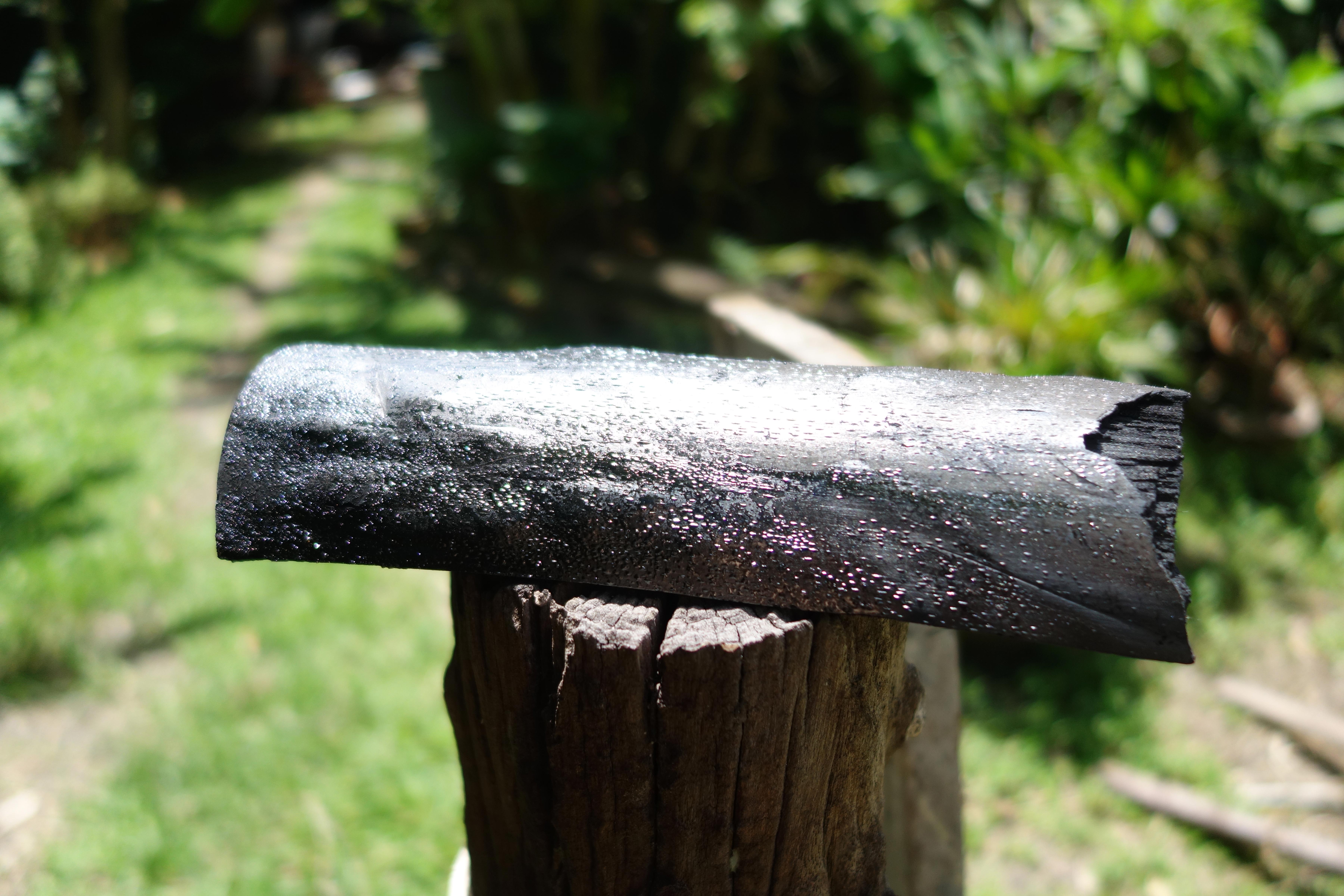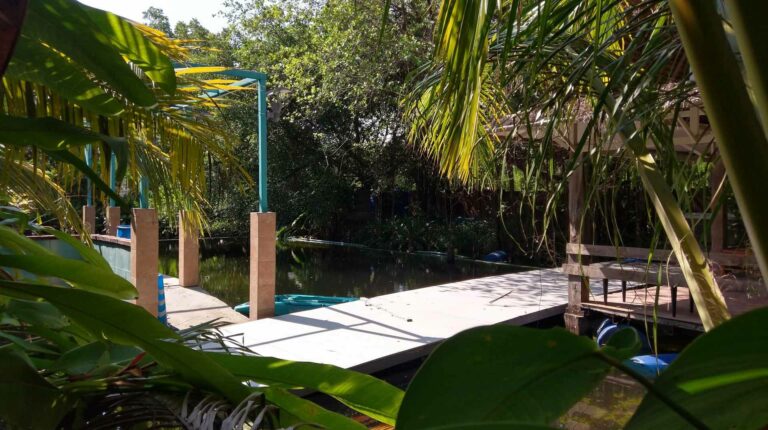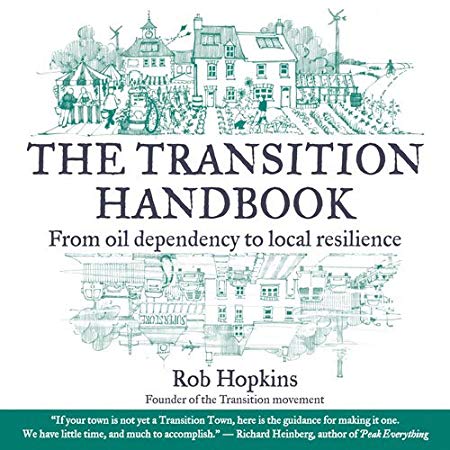Charcoal, Fire, Lye & Barbecuing
[fusion_builder_container admin_label=”Heading” hundred_percent=”yes” hundred_percent_height=”no” hundred_percent_height_scroll=”no” hundred_percent_height_center_content=”yes” equal_height_columns=”no” menu_anchor=”” hide_on_mobile=”small-visibility,medium-visibility,large-visibility” status=”published” publish_date=”” class=”” id=”” background_color=”#ffffff” background_image=”https://permaculture.asia/wp-content/uploads/2019/05/IMAG2518-charcoal-landscape.jpg” background_position=”center center” background_repeat=”no-repeat” fade=”no” background_parallax=”fixed” enable_mobile=”no” parallax_speed=”1.0″ video_mp4=”” video_webm=”” video_ogv=”” video_url=”” video_aspect_ratio=”16:9″ video_loop=”yes” video_mute=”yes” video_preview_image=”” border_size=”” border_color=”” border_style=”solid” margin_top=”” margin_bottom=”” padding_top=”40px” padding_right=”” padding_bottom=”40px” padding_left=”” admin_toggled=”no”][fusion_builder_row][fusion_builder_column type=”1_1″ layout=”1_1″ spacing=”” center_content=”no” link=”” target=”_self” min_height=”” hide_on_mobile=”small-visibility,medium-visibility,large-visibility” class=”” id=”” background_image_id=”” background_color=”” background_image=”” background_position=”left top” undefined=”” background_repeat=”no-repeat” hover_type=”none” border_size=”0″ border_color=”” border_style=”solid” border_position=”all” border_radius_top_left=”” border_radius_top_right=”” border_radius_bottom_left=”” border_radius_bottom_right=”” box_shadow=”no” box_shadow_vertical=”” box_shadow_horizontal=”” box_shadow_blur=”0″ box_shadow_spread=”0″ box_shadow_color=”” box_shadow_style=”” padding_top=”” padding_right=”” padding_bottom=”” padding_left=”” margin_top=”” margin_bottom=”” animation_type=”” animation_direction=”left” animation_speed=”0.3″ animation_offset=”” last=”no”][fusion_title hide_on_mobile=”small-visibility,medium-visibility,large-visibility” class=”.font-h1-opaque-background” id=”” content_align=”center” size=”1″ font_size=”68px” line_height=”1.7em” letter_spacing=”8px” margin_top=”” margin_bottom=”” margin_top_mobile=”” margin_bottom_mobile=”” text_color=”#ffffff” style_type=”none” sep_color=””]
Charcoal, Fire, Lye & Barbecuing
[/fusion_title][fusion_title hide_on_mobile=”small-visibility,medium-visibility,large-visibility” class=”” id=”” content_align=”center” size=”2″ font_size=”25px” line_height=”40px” letter_spacing=”” margin_top=”” margin_bottom=”” margin_top_mobile=”” margin_bottom_mobile=”” text_color=”#ffffff” style_type=”none” sep_color=””]Pyrolitic Alchemy[/fusion_title][/fusion_builder_column][/fusion_builder_row][/fusion_builder_container][fusion_builder_container admin_label=”Details” hundred_percent=”no” equal_height_columns=”no” menu_anchor=”” hide_on_mobile=”no” class=”” id=”” background_color=”” background_image=”” background_position=”left top” background_repeat=”no-repeat” fade=”no” background_parallax=”none” enable_mobile=”no” parallax_speed=”0.3″ video_mp4=”” video_webm=”” video_ogv=”” video_url=”” video_aspect_ratio=”16:9″ video_loop=”yes” video_mute=”yes” video_preview_image=”” border_size=”0px” border_color=”” border_style=”solid” margin_top=”” margin_bottom=”” padding_top=”0″ padding_right=”” padding_bottom=”0″ padding_left=”” admin_toggled=”no”][fusion_builder_row][fusion_builder_column type=”1_1″ layout=”1_1″ spacing=”” center_content=”no” hover_type=”none” link=”” min_height=”” hide_on_mobile=”small-visibility,medium-visibility,large-visibility” class=”” id=”” background_color=”” background_image=”” background_position=”left top” undefined=”” background_repeat=”no-repeat” border_size=”0″ border_color=”” border_style=”solid” border_position=”all” padding_top=”0px” padding_right=”0px” padding_bottom=”50px” padding_left=”0px” margin_top=”” margin_bottom=”” animation_type=”” animation_direction=”left” animation_speed=”0.3″ animation_offset=”” last=”no”][fusion_separator style_type=”single solid” hide_on_mobile=”small-visibility,medium-visibility,large-visibility” class=”” id=”” sep_color=”#ec4858″ top_margin=”” bottom_margin=”” border_size=”16″ icon=”” icon_circle=”” icon_circle_color=”” width=”40%” alignment=”center” /][/fusion_builder_column][fusion_builder_column type=”1_5″ layout=”1_5″ spacing=”” center_content=”no” link=”” target=”_self” min_height=”” hide_on_mobile=”small-visibility,medium-visibility,large-visibility” class=”” id=”” background_color=”” background_image=”” background_image_id=”” background_position=”left top” background_repeat=”no-repeat” hover_type=”none” border_size=”0″ border_color=”” border_style=”solid” border_position=”all” box_shadow=”no” box_shadow_blur=”0″ box_shadow_spread=”0″ box_shadow_color=”” box_shadow_style=”” animation_type=”” animation_direction=”left” animation_speed=”0.3″ animation_offset=”” last=”no”][/fusion_builder_column][fusion_builder_column type=”3_5″ layout=”1_3″ spacing=”yes” center_content=”yes” hover_type=”none” link=”” min_height=”” hide_on_mobile=”no” class=”” id=”” background_color=”” background_image=”” background_position=”left top” undefined=”” background_repeat=”no-repeat” border_size=”0″ border_color=”” border_style=”solid” border_position=”all” padding_top=”” padding_right=”” padding_bottom=”” padding_left=”” margin_top=”” margin_bottom=”10px” animation_type=”” animation_direction=”left” animation_speed=”0.1″ animation_offset=”” last=”no”][fusion_title hide_on_mobile=”small-visibility,medium-visibility,large-visibility” class=”” id=”” content_align=”left” size=”3″ font_size=”” line_height=”” letter_spacing=”” margin_top=”” margin_bottom=”” margin_top_mobile=”” margin_bottom_mobile=”” text_color=”” style_type=”default” sep_color=””]
Catch And Store Energy
[/fusion_title][fusion_text columns=”” column_min_width=”” column_spacing=”” rule_style=”default” rule_size=”” rule_color=”” hide_on_mobile=”small-visibility,medium-visibility,large-visibility” class=”” id=””]
Charcoal has been used to make fires for thousands of years of human history. High temperatures made it useful in the Iron Age. High temperature & lack of smoke when burning, and higher energy density compared to wood, make it very attractive as a fuel for cooking.
[/fusion_text][fusion_separator style_type=”single solid” hide_on_mobile=”small-visibility,medium-visibility,large-visibility” class=”” id=”” sep_color=”” top_margin=”” bottom_margin=”40px” border_size=”” icon=”” icon_circle=”” icon_circle_color=”” width=”300px” alignment=”center” /][fusion_imageframe image_id=”3038|large” max_width=”” style_type=”” blur=”” stylecolor=”” hover_type=”none” bordersize=”” bordercolor=”” borderradius=”” align=”none” lightbox=”yes” gallery_id=”” lightbox_image=”” lightbox_image_id=”” alt=”” link=”” linktarget=”_self” hide_on_mobile=”small-visibility,medium-visibility,large-visibility” class=”” id=”” animation_type=”” animation_direction=”left” animation_speed=”0.3″ animation_offset=””]https://permaculture.asia/wp-content/uploads/2019/07/DSC00420-1024×683.jpg[/fusion_imageframe][fusion_separator style_type=”none” hide_on_mobile=”small-visibility,medium-visibility,large-visibility” class=”” id=”” sep_color=”” top_margin=”” bottom_margin=”40px” border_size=”” icon=”” icon_circle=”” icon_circle_color=”” width=”300px” alignment=”left” /][fusion_text columns=”” column_min_width=”” column_spacing=”” rule_style=”default” rule_size=”” rule_color=”” hide_on_mobile=”small-visibility,medium-visibility,large-visibility” class=”” id=””]
Charcoal production here at Daruma is a thing. With David Holmgren’s recent book RetroSuburbia, and his ideas of cooking once per week using charcoal to offset our impact on the environment (as well as having some social time and satisfying our appetites), we thought we’d sit down and look at using charcoal for cooking here at Daruma Eco-farm and Mosaic School. In total we have around 75 children aged 3 to 14, and 10 to 15 adults. We have lots of people that eat cooked food, bamboo which continually grows, and the Willmann Mark IV Charcoal Furnace at our disposal to run some tests.
In using the bamboo that grows rampantly here at Daruma as the main ingredient for our charcoal, dried bamboo leaves for kindling, and fallen / lopped / pruned timber for the initial fire, we are touching some important Permaculture Principles:
- Catch & store energy
- Obtain a yield
- Use and value renewable resources and services
More on Permaculture Principles here
Solar energy, is caught & stored in the form of bamboo & wood, and our yield is primarily the charcoal (but also the residual ash for making Lye, which in turn is used for making soap). The bamboo is a renewable resource, as is our human labour to harvest and process the bamboo and firewood.
[/fusion_text][fusion_separator style_type=”single solid” hide_on_mobile=”small-visibility,medium-visibility,large-visibility” class=”” id=”” sep_color=”” top_margin=”” bottom_margin=”40px” border_size=”” icon=”” icon_circle=”” icon_circle_color=”” width=”300px” alignment=”left” /][fusion_title hide_on_mobile=”small-visibility,medium-visibility,large-visibility” class=”” id=”” content_align=”left” size=”3″ font_size=”” line_height=”” letter_spacing=”” margin_top=”” margin_bottom=”” margin_top_mobile=”” margin_bottom_mobile=”” text_color=”” style_type=”default” sep_color=””]Thoughts on Charcoal[/fusion_title][fusion_imageframe image_id=”3036|large” max_width=”” style_type=”” blur=”” stylecolor=”” hover_type=”none” bordersize=”” bordercolor=”” borderradius=”” align=”none” lightbox=”yes” gallery_id=”” lightbox_image=”” lightbox_image_id=”” alt=”” link=”” linktarget=”_self” hide_on_mobile=”small-visibility,medium-visibility,large-visibility” class=”” id=”” animation_type=”” animation_direction=”left” animation_speed=”0.3″ animation_offset=””]https://permaculture.asia/wp-content/uploads/2019/07/DSC00466-1024×683.jpg[/fusion_imageframe][fusion_text columns=”” column_min_width=”” column_spacing=”” rule_style=”default” rule_size=”” rule_color=”” hide_on_mobile=”small-visibility,medium-visibility,large-visibility” class=”” id=””]
I’ve always been fascinated by charcoal. From my earliest memories in Wales of an uncle lighting the barbecue in the summer, to now, decades later, seeing first hand the production of bamboo charcoal here in Thailand.
It is something that captures my attention when I look at it, and of course, is one of the ingredients to a fire. And who isn’t interested in fire!*
(*small children everywhere, beware the wrath of thy parents, other adults, neighbours and the emergency services…)
On a serious, safety note, fire is not so much a hazard here in the Tropics. We are in Siracha, famous around the world for it’s hot chilli sauce. Not so famous for it’s forest fires. Because we don’t get them very often. Observation of local laws, fire safety guidelines & good common sense should prevail whenever fire is used. In some scenarios, you may even decide against using it at all. Dry summers in certain areas for example could be a terrible place to have a charcoal fire in the woods.
[/fusion_text][fusion_separator style_type=”single solid” hide_on_mobile=”small-visibility,medium-visibility,large-visibility” class=”” id=”” sep_color=”” top_margin=”” bottom_margin=”40px” border_size=”” icon=”” icon_circle=”” icon_circle_color=”” width=”300px” alignment=”left” /][fusion_title hide_on_mobile=”small-visibility,medium-visibility,large-visibility” class=”” id=”” content_align=”left” size=”3″ font_size=”” line_height=”” letter_spacing=”” margin_top=”” margin_bottom=”” margin_top_mobile=”” margin_bottom_mobile=”” text_color=”” style_type=”default” sep_color=””]Historical Usage of Charcoal[/fusion_title][fusion_imageframe image_id=”2237|large” max_width=”” style_type=”” blur=”” stylecolor=”” hover_type=”none” bordersize=”” bordercolor=”” borderradius=”” align=”none” lightbox=”yes” gallery_id=”” lightbox_image=”” lightbox_image_id=”” alt=”” link=”” linktarget=”_self” hide_on_mobile=”small-visibility,medium-visibility,large-visibility” class=”” id=”” animation_type=”” animation_direction=”left” animation_speed=”0.3″ animation_offset=””]https://permaculture.asia/wp-content/uploads/2019/05/IMAG2518-charcoal-1024×573.jpg[/fusion_imageframe][fusion_text columns=”” column_min_width=”” column_spacing=”” rule_style=”default” rule_size=”” rule_color=”” hide_on_mobile=”small-visibility,medium-visibility,large-visibility” class=”” id=””]
Charcoal has been used to make fires for thousands of years of human history. High temperatures made it useful in the Iron Age. High temperature & lack of smoke when burning, and higher energy density compared to wood, make it very attractive as a fuel for cooking.
Some of our closest cousins eat it when they suffer indigestion, we use it for making artwork, filtering water, improving soil…the list of applications for charcoal is a long one. But here, we’re looking more at cooking with it. Because if we like 1 thing here at Daruma, it is food. Eating it, especially. And fire. 2 things we like here at Daruma. We like food, and fire! And a good old social around the fire with our food. 3 things we…never mind.
As well as some of the historical uses you can find for charcoal, bamboo charcoal in particular seems to be favoured by many for making activated charcoal, perhaps in part because of local abundance, and perhaps due to some of the same reasons monkeys use it to help with indigestion – other things bind easily to it, including I assume, indigenous & effective microorganisms that we want to reintroduce or encourage more of in our soil.
[/fusion_text][fusion_separator style_type=”single solid” hide_on_mobile=”small-visibility,medium-visibility,large-visibility” class=”” id=”” sep_color=”” top_margin=”” bottom_margin=”40px” border_size=”” icon=”” icon_circle=”” icon_circle_color=”” width=”300px” alignment=”left” /][fusion_title hide_on_mobile=”small-visibility,medium-visibility,large-visibility” class=”” id=”” content_align=”left” size=”3″ font_size=”” line_height=”” letter_spacing=”” margin_top=”” margin_bottom=”” margin_top_mobile=”” margin_bottom_mobile=”” text_color=”” style_type=”default” sep_color=””]
David Holmgren’s Thoughts on Barbecuing
[/fusion_title][fusion_imageframe image_id=”3046|large” max_width=”” style_type=”” blur=”” stylecolor=”” hover_type=”none” bordersize=”” bordercolor=”” borderradius=”” align=”none” lightbox=”yes” gallery_id=”” lightbox_image=”” lightbox_image_id=”” alt=”” link=”” linktarget=”_self” hide_on_mobile=”small-visibility,medium-visibility,large-visibility” class=”” id=”” animation_type=”” animation_direction=”left” animation_speed=”0.3″ animation_offset=””]https://permaculture.asia/wp-content/uploads/2019/07/IMAG2594-1024×573.jpg[/fusion_imageframe][fusion_text columns=”” column_min_width=”” column_spacing=”” rule_style=”default” rule_size=”” rule_color=”” hide_on_mobile=”small-visibility,medium-visibility,large-visibility” class=”” id=””]
From the point of view of permaculture, charcoal most definitely applies to the principle ‘Catch and store energy’, and charcoal production long-term is close to being a carbon-neutral process. Even if processed hundreds of miles away, and transported to your home, when compared to fossil fuels charcoal has a fraction of the emissions per unit of energy that we use. (David Holmgren, RetroSuburbia, p111, 112)
One of Holmgren’s ideas is that we barbecue once a week instead of cooking with gas/electric to reduce our impact on global resources. Sounds interesting right? Who doesn’t like a barbecue?
Okay, so a wet summer in Wales might not be the best for outdoor barbecuing, alright. But still, there may be some in the valleys with covered outdoor space, lean-tos or other spaces that are good for barbecuing.
Certainly here at Daruma in Thailand, we have the climate & raw materials for this to be a feasible way of cooking once a week. And I like a fire now & then. That much may already be apparent. I just thought I should mention it again…
At Daruma we also have 2 types of tree that can be used for smoking meats, one of which is the Madras Thorn, so they are also a valuable resource.
[/fusion_text][fusion_separator style_type=”single solid” hide_on_mobile=”small-visibility,medium-visibility,large-visibility” class=”” id=”” sep_color=”” top_margin=”” bottom_margin=”40px” border_size=”” icon=”” icon_circle=”” icon_circle_color=”” width=”300px” alignment=”left” /][fusion_title hide_on_mobile=”small-visibility,medium-visibility,large-visibility” class=”” id=”” content_align=”left” size=”3″ font_size=”” line_height=”” letter_spacing=”” margin_top=”” margin_bottom=”” margin_top_mobile=”” margin_bottom_mobile=”” text_color=”” style_type=”default” sep_color=””]Bamboo & Charcoal Production at Daruma Ecofarm[/fusion_title][fusion_imageframe image_id=”3031|large” max_width=”” style_type=”” blur=”” stylecolor=”” hover_type=”none” bordersize=”” bordercolor=”” borderradius=”” align=”none” lightbox=”yes” gallery_id=”” lightbox_image=”” lightbox_image_id=”” alt=”” link=”” linktarget=”_self” hide_on_mobile=”small-visibility,medium-visibility,large-visibility” class=”” id=”” animation_type=”” animation_direction=”left” animation_speed=”0.3″ animation_offset=””]https://permaculture.asia/wp-content/uploads/2019/07/IMAG0093-579×1024.jpg[/fusion_imageframe][fusion_text columns=”” column_min_width=”” column_spacing=”” rule_style=”default” rule_size=”” rule_color=”” hide_on_mobile=”small-visibility,medium-visibility,large-visibility” class=”” id=””]
At Daruma we favour using bamboo for charcoal production. We have an abundant supply readily available on-site, and it just keeps on growing. The charcoal furnace is pretty much always ready to be used, so that is another resource we have here. It makes charcoal very efficiently, but you could make charcoal in other ways – pile the wood up, cover with turf, set it on fire, come back later.
The process at Daruma is to harvest the bamboo, then cut it to lengths approximately a foot long, cutting the node as a separate ‘biscuit’ between 2 cut lengths when practical to do so. The open cylinders of bamboo (internodes) are then split in two, and these half-pieces, along with the nodes, then give us good efficiency, in terms of the density of bamboo, when it comes to packing & stacking the bamboo in the drum.
We use a recycled 55 gallon oil drum. We have a sealing band to secure the lid so it is as airtight as possible, which gets clamped with a bolt. Inside the furnace, we have a sturdy iron base, and this has a pipe in the centre sticking up an inch or two. There is a hole in the middle of the bottom of the barrel which locates on this central pipe, and the pipe continues down under the stand, directly into the furnace below. This is effectively the only outlet for gasses that vaporize out of the bamboo during firing. Those gasses are very much combustible, and we usually see much of them as smoke in fires due to incomplete combustion (read: inefficiency). These gasses are one of the things that make the furnace so efficient. The initial fire is only required to get the bamboo inside the sealed drum up to a temperature at which vaporization of the gasses starts, then those gasses provide the fuel for the fire below to complete the pyrolysis inside the drum.
The sealed drum containing the bamboo, goes in our cylindrical kiln made of stacked concrete rings, a metre in diameter lined with firebricks. Then we place the reinforced concrete lid on top, and seal it with wet mud. The lid has a 4 inch hole in it to allow airflow during the initial stages of lighting the fire.
We typically use dry bamboo leaves as tinder, and for kindling, there are plenty of small twigs and branches fallen from the many trees here. Larger diameter wood is also abundant on-site with regular tree trimming. Those are the basics for our fire. We try to push the burning wood & embers clear of the pipe coming from the bottom of the barrel so that nothing obstructs off-gassing when that happens. Temperatures have been measured using a thermocouple, and the inside of the furnace has exceeded 1000 degrees C.
Sometime between 30 minutes to an hour or so after lighting the fire under the barrel, off-gassing occurs. This can be quite spectacular with flames coming out of the load door at the front up to 6 feet high. We then know that volatile / combustible constituents in the bamboo are vaporizing & being forced out of the hole in the bottom of the barrel, through the pipe underneath, and in to the fire below. After this, we do not add any more wood to the fire, as it is self-sustaining with the remaining coals, and flammable gasses from the bamboo.
Next day, we remove the lid, and take out our latest batch of warm freshly baked charcoal. Some of the colours evident on the surface of the charcoal after being removed from the drum are spectacular. The surface is shiny, and some kind of iridescence creates a mixture of shimmering blues, greens, yellows and purples.
One of the by-products of firing up our furnace, is ash. This we use to create Lye to make soap and detergents for use in the school, kitchens and bathrooms.
[/fusion_text][fusion_separator style_type=”single solid” hide_on_mobile=”small-visibility,medium-visibility,large-visibility” class=”” id=”” sep_color=”” top_margin=”” bottom_margin=”40px” border_size=”” icon=”” icon_circle=”” icon_circle_color=”” width=”300px” alignment=”left” /][fusion_title hide_on_mobile=”small-visibility,medium-visibility,large-visibility” class=”” id=”” content_align=”left” size=”3″ font_size=”” line_height=”” letter_spacing=”” margin_top=”” margin_bottom=”” margin_top_mobile=”” margin_bottom_mobile=”” text_color=”” style_type=”default” sep_color=””]Cooking 1 Day Per Week With Charcoal[/fusion_title][fusion_title hide_on_mobile=”small-visibility,medium-visibility,large-visibility” class=”” id=”” content_align=”left” size=”4″ font_size=”” line_height=”” letter_spacing=”” margin_top=”” margin_bottom=”” margin_top_mobile=”” margin_bottom_mobile=”” text_color=”” style_type=”default” sep_color=””]
What Are The Effects On CO2 Emissions?
[/fusion_title][fusion_text columns=”” column_min_width=”” column_spacing=”” rule_style=”default” rule_size=”” rule_color=”” hide_on_mobile=”small-visibility,medium-visibility,large-visibility” class=”” id=””]
So, looking at barbecuing 1 day per week, when school is open, here are some approximate numbers.
- 1 x LPG bottle in kitchen = 15kg.
- 1 or 2 bottles per month purchased. Say 1.5/month. 15Kg x 1.5 = 22.5kg per month of LPG for cooking.
- 3027 grams of CO2 produced per kilogram of LPG
- 22.5kg LPG per month x 3027 = 68,100 grams of CO2. 68Kg per month.
- Multiplied by 12 months = approx 816kg of CO2 per year in total from cooking with gas in the kitchens.
- Approximately 22 schooldays per month, say 264 in a year. About 11 weeks off for school holidays.
- That is 816kg / 264 days = 3.1kg of CO2 per school day.
So, say we cook every friday at Daruma with charcoal, on schooldays (75+ children, 10 to 15 adults). Accounting for school holidays that would be maybe 41 days, multiply that by 3.1kg CO2 each day = 127kg of CO2 per year.
About 127kg of CO2 saved per year by cooking 1 day per week, using bamboo charcoal.
Of course, we could also add in the production & distribution footprint of LPG per kilogram and add that into the mix, offset it with the footprint of the circular saw and electricity used to cut the bamboo if we don’t use the machete instead, etc etc. For cooking, we’re not quite in the same ballpark when compared to say, heating, hot water etc. You could have a figure of 5,000kg of CO2 per year for heating a typical house in Europe. Using a rocket mass heater with a fuel source that was close to carbon-neutral in such a scenario might have a significantly larger impact on the amount of CO2 saved.
Barbecuing once a week still makes a difference, reduces an individual or household’s CO2 emissions, reliance on fossil fuels, the grid, and is a different experience to cooking in the kitchen also, usually being much more of a sociable gathering.
Other calculations below.
butane contains 13.7 kWh per kg
LPG: 1 liter of LPG weighs 550 grammes.
So, 1kg of LPG = 1.818 litres
LPG consists for 82,5% of carbon, or 454 grammes of carbon per liter of LPG.
In order to combust this carbon to CO2, 1211 grammes of oxygen is needed.
The sum is then 454 + 1211 = 1665 grammes of CO2/liter of LPG.
1665 grams of CO2 produced per liter of LPG.
3027 grams of CO2 produced per kilogram of LPG
to convert kWh to Btu multiply by 3412
propane emits 139 pounds of CO2 for every million Btu burned
Resources:
[/fusion_text][fusion_separator style_type=”single solid” hide_on_mobile=”small-visibility,medium-visibility,large-visibility” class=”” id=”” sep_color=”” top_margin=”” bottom_margin=”40px” border_size=”” icon=”” icon_circle=”” icon_circle_color=”” width=”300px” alignment=”left” /][/fusion_builder_column][fusion_builder_column type=”1_5″ layout=”1_5″ spacing=”” center_content=”no” link=”” target=”_self” min_height=”” hide_on_mobile=”small-visibility,medium-visibility,large-visibility” class=”” id=”” background_color=”” background_image=”” background_image_id=”” background_position=”left top” background_repeat=”no-repeat” hover_type=”none” border_size=”0″ border_color=”” border_style=”solid” border_position=”all” box_shadow=”no” box_shadow_blur=”0″ box_shadow_spread=”0″ box_shadow_color=”” box_shadow_style=”” animation_type=”” animation_direction=”left” animation_speed=”0.3″ animation_offset=”” last=”no”][/fusion_builder_column][/fusion_builder_row][/fusion_builder_container][fusion_builder_container hundred_percent=”no” hundred_percent_height=”no” hundred_percent_height_scroll=”no” hundred_percent_height_center_content=”yes” equal_height_columns=”no” menu_anchor=”” hide_on_mobile=”small-visibility,medium-visibility,large-visibility” status=”published” publish_date=”” class=”” id=”” background_color=”” background_image=”” background_position=”center center” background_repeat=”no-repeat” fade=”no” background_parallax=”none” enable_mobile=”no” parallax_speed=”0.3″ video_mp4=”” video_webm=”” video_ogv=”” video_url=”” video_aspect_ratio=”16:9″ video_loop=”yes” video_mute=”yes” video_preview_image=”” border_size=”” border_color=”” border_style=”solid” margin_top=”” margin_bottom=”” padding_top=”” padding_right=”” padding_bottom=”” padding_left=”” admin_toggled=”no”][fusion_builder_row][fusion_builder_column type=”1_1″ layout=”1_1″ spacing=”” center_content=”no” link=”” target=”_self” min_height=”” hide_on_mobile=”small-visibility,medium-visibility,large-visibility” class=”” id=”” background_color=”” background_image=”” background_image_id=”” background_position=”left top” background_repeat=”no-repeat” hover_type=”none” border_size=”0″ border_color=”” border_style=”solid” border_position=”all” border_radius=”” box_shadow=”no” dimension_box_shadow=”” box_shadow_blur=”0″ box_shadow_spread=”0″ box_shadow_color=”” box_shadow_style=”” padding_top=”” padding_right=”” padding_bottom=”” padding_left=”” margin_top=”” margin_bottom=”” animation_type=”” animation_direction=”left” animation_speed=”0.3″ animation_offset=”” last=”no”][fusion_gallery layout=”masonry” picture_size=”” columns=”4″ column_spacing=”10″ gallery_masonry_grid_ratio=”” gallery_masonry_width_double=”” hover_type=”” lightbox=”yes” lightbox_content=”” bordersize=”” bordercolor=”” border_radius=”” hide_on_mobile=”small-visibility,medium-visibility,large-visibility” class=”” id=””][fusion_gallery_image image=”https://permaculture.asia/wp-content/uploads/2019/07/IMAG2594-1024×573.jpg” image_id=”3046|large” link=”” linktarget=”_self” /][fusion_gallery_image image=”https://permaculture.asia/wp-content/uploads/2019/07/DSC00466-1-1024×683.jpg” image_id=”3045|large” link=”” linktarget=”_self” /][fusion_gallery_image image=”https://permaculture.asia/wp-content/uploads/2019/07/IMAG0094-579×1024.jpg” image_id=”3042|large” link=”” linktarget=”_self” /][fusion_gallery_image image=”https://permaculture.asia/wp-content/uploads/2019/07/DSC00407-1024×683.jpg” image_id=”3041|large” link=”” linktarget=”_self” /][fusion_gallery_image image=”https://permaculture.asia/wp-content/uploads/2019/07/DSC00411-1024×683.jpg” image_id=”3040|large” link=”” linktarget=”_self” /][fusion_gallery_image image=”https://permaculture.asia/wp-content/uploads/2019/07/DSC00416-1024×683.jpg” image_id=”3039|large” link=”” linktarget=”_self” /][fusion_gallery_image image=”https://permaculture.asia/wp-content/uploads/2019/07/DSC00420-1024×683.jpg” image_id=”3038|large” link=”” linktarget=”_self” /][fusion_gallery_image image=”https://permaculture.asia/wp-content/uploads/2019/07/DSC00422-683×1024.jpg” image_id=”3037|large” link=”” linktarget=”_self” /][fusion_gallery_image image=”https://permaculture.asia/wp-content/uploads/2019/07/DSC00466-1024×683.jpg” image_id=”3036|large” link=”” linktarget=”_self” /][fusion_gallery_image image=”https://permaculture.asia/wp-content/uploads/2019/07/DSC00468-1024×683.jpg” image_id=”3034|large” link=”” linktarget=”_self” /][fusion_gallery_image image=”https://permaculture.asia/wp-content/uploads/2019/07/DSC00480-1024×683.jpg” image_id=”3033|large” link=”” linktarget=”_self” /][fusion_gallery_image image=”https://permaculture.asia/wp-content/uploads/2019/07/DSC00482-1024×683.jpg” image_id=”3032|large” link=”” linktarget=”_self” /][fusion_gallery_image image=”https://permaculture.asia/wp-content/uploads/2019/07/IMAG0093-579×1024.jpg” image_id=”3031|large” link=”” linktarget=”_self” /][fusion_gallery_image image=”https://permaculture.asia/wp-content/uploads/2019/05/IMAG2518-charcoal-landscape-1024×309.jpg” image_id=”2748|large” link=”” linktarget=”_self” /][/fusion_gallery][/fusion_builder_column][/fusion_builder_row][/fusion_builder_container]





